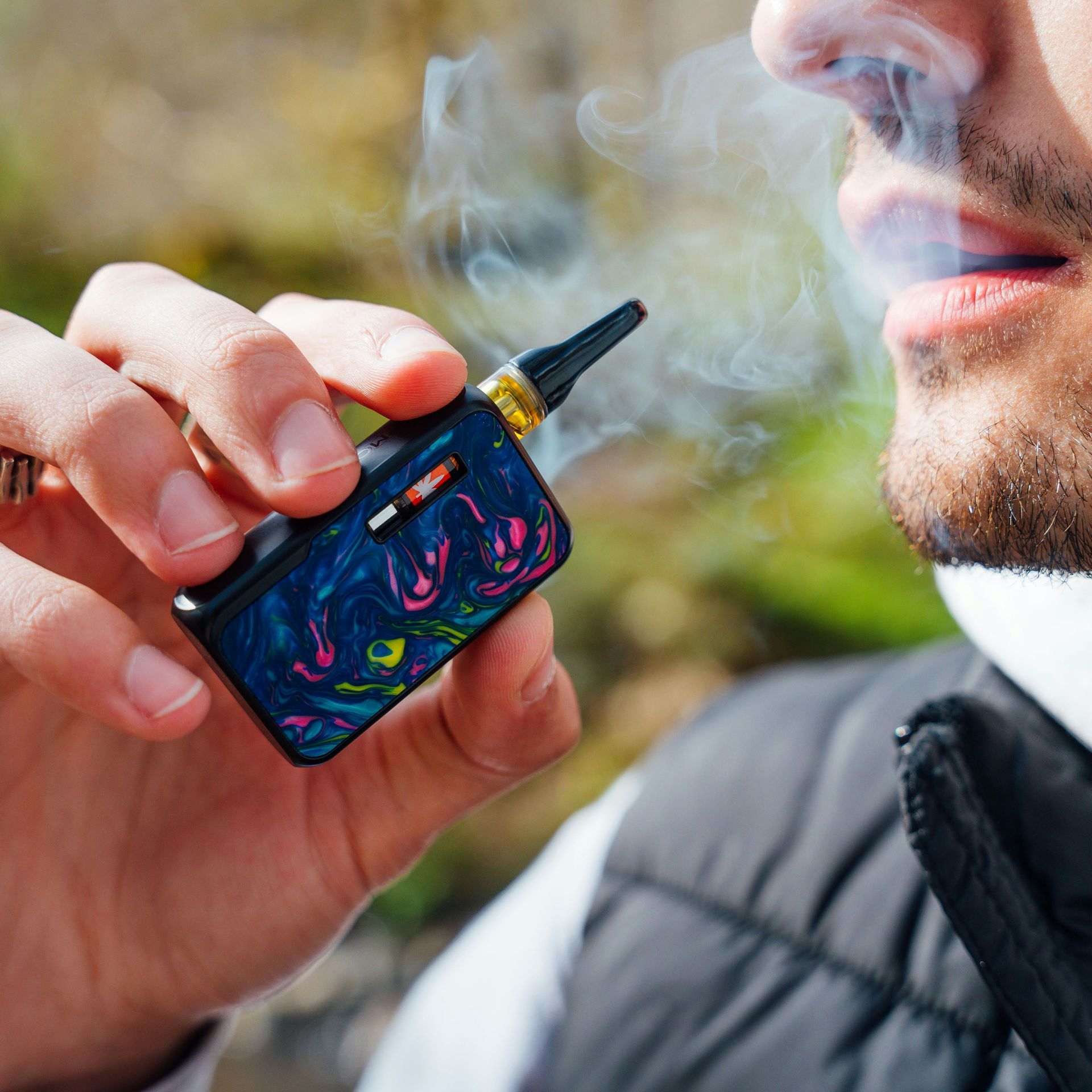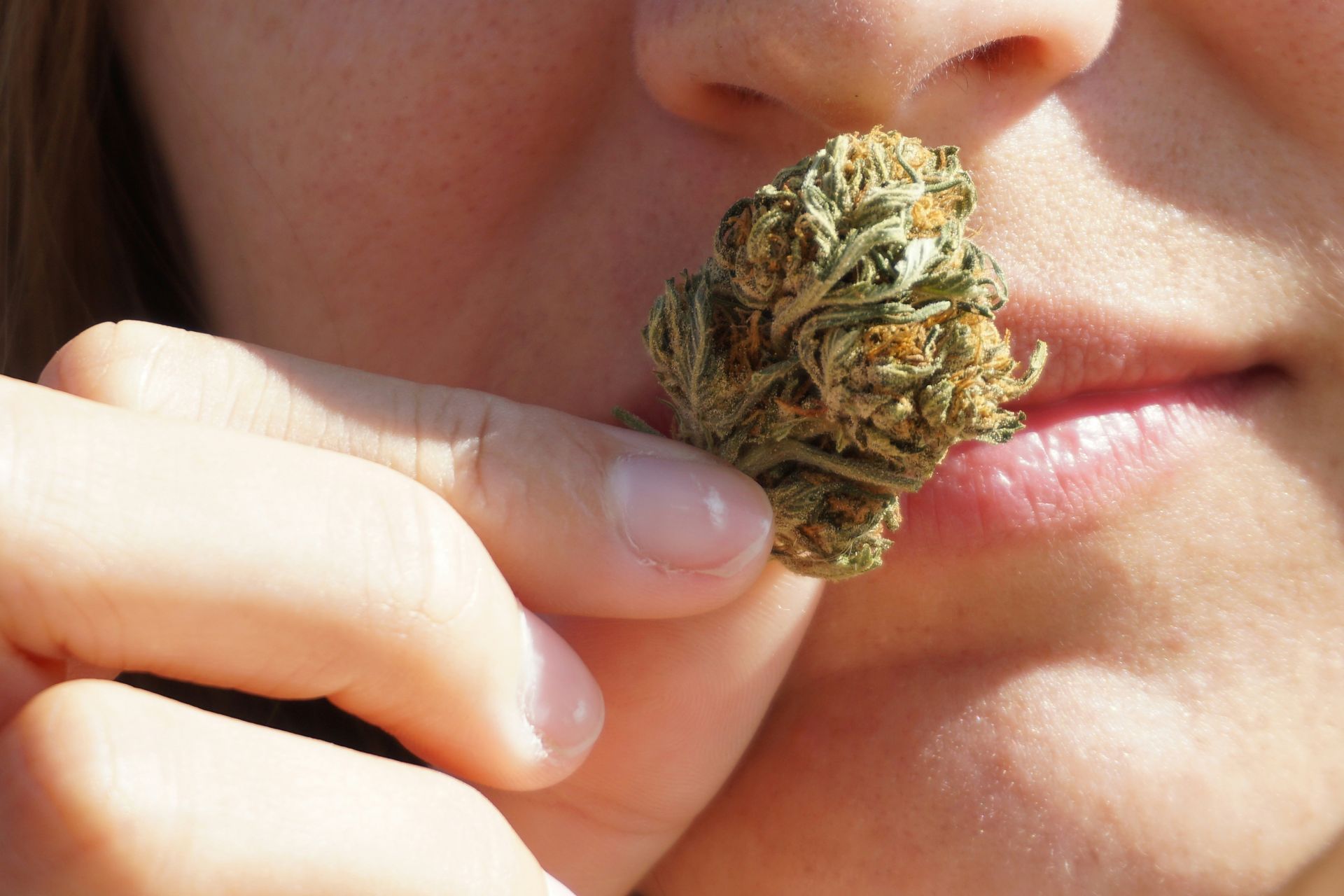
When it comes to cannabis consumption, many users are exploring vaping as an alternative to smoking, but is it truly a safer alternative? With growing awareness of potential health risks associated with traditional smoking, it's important to weigh the pros and cons of both methods. Understanding the different modes of consumption can help individuals make informed decisions about their cannabis journey. In this blog, we’ll dive into the key differences between vaping and smoking, their impact on health, and whether vaping offers a better experience overall.
Is Vaping Cannabis a Safer Option Than Smoking? Exploring the Differences
The Difference Between Vaping and Smoking Cannabis
As the cannabis industry continues to evolve, consumers are exploring various modes of consumption, with vaping emerging as a popular healthier alternative to smoking. Understanding the differences between these methods of consumption is essential for making informed decisions about cannabis use. Both vaping and smoking offer unique experiences, but they also come with their own set of potential health risks and benefits.
1. Method of Consumption
- Smoking Cannabis: This traditional mode of cannabis consumption involves burning the flower, producing marijuana smoke that delivers cannabinoids alongside harmful substances such as tar and carcinogens. While smoking provides immediate effects, it may contribute to respiratory issues and other potential health risks over time.
- Vaping Cannabis: This method heats cannabis at lower temperatures, converting active compounds into vapor rather than smoke. Vaping is often marketed as a healthier alternative, as it minimizes exposure to harmful combustion byproducts and may provide a smoother experience for the lungs.
2. Potential Health Risks and Safety
While vaping is considered a safer choice by some, it's not without potential risks. Concerns surrounding the safety of vaping products, including additives and battery-operated devices, have raised questions about long-term health effects. On the other hand, smoking cannabis exposes users to marijuana smoke, which contains harmful substances that may impact lung health.
3. Effects and Experience
- Smoking offers an intense and immediate effect due to the rapid absorption of cannabinoids through combustion, making it a preferred choice for those seeking a robust cannabis experience.
- The effects of vaping, however, tend to be smoother and more controlled, with enhanced flavor profiles due to the preservation of terpenes and cannabinoids at lower temperatures. Vaping also offers a more discreet and odor-free option for users.
4. Making an Informed Decision
When deciding between vaping and smoking, it’s crucial to consider the pros and cons of each mode of cannabis consumption. Those seeking a traditional and potent experience may prefer smoking, while individuals looking for a potentially healthier alternative with fewer harmful substances might opt for vaping. Ultimately, understanding the methods of consumption and weighing the potential risks can empower users to make choices that align with their lifestyle and wellness goals.
Are Carts Healthier Than Bud?
When choosing between cannabis cartridges (carts) and traditional bud, it's essential to understand the differences in terms of cannabis consumption practices, method of consumption, potency, convenience, and potential health effects. Both options offer unique experiences that cater to different preferences and lifestyles, but each comes with its own potential risks and benefits.
1. Method of Consumption
- Carts: Cannabis vaping devices heat concentrated cannabis oil to produce vapor instead of smoking marijuana, which eliminates combustion and reduces exposure to harmful effects such as tar and carcinogens. The popularity of cannabis vaping continues to rise, driven by the perception that it may offer certain health benefits over traditional smoking.
- Bud: Traditional cannabis flower is typically smoked using joints, pipes, or bongs, producing marijuana smoke that can contribute to respiratory effects, including coughing and shortness of breath. While smoking provides a full-spectrum experience, it carries potential harm to respiratory health, especially with long-term marijuana use.
2. Potency and Effects
- Carts: Cannabis vaping products often contain highly concentrated cannabis oil, delivering potent and fast-acting effects. However, the effects of vaping may differ from smoking due to the refined nature of the oil, which may lack some of the natural compounds found in raw cannabis.
- Bud: Smoking marijuana provides a more traditional and full-bodied experience, with the entire cannabinoid and terpene profile intact, offering a balanced effect. However, the long-term effects of smoking can impact lung function and contribute to chronic respiratory symptoms.
3. Convenience and Discreetness
- Carts: Vape pens are portable, easy to use, and produce minimal odor, making them an ideal choice for discreet, on-the-go consumption. The rise of e-cigarette use and nicotine vaping has also influenced the widespread adoption of cannabis vaping.
- Bud: Smoking cannabis requires preparation, such as grinding and rolling, and tends to produce a strong odor, making it less discreet and convenient than vaping.
4. Health Considerations and Risks
- Carts: While vaping reduces exposure to combustion byproducts, concerns persist about the safety of certain cannabis vaping products, including additives and unregulated ingredients that could pose potential harm to respiratory health. Some users with pre-existing health conditions may experience irritation or adverse reactions to vaping.
- Bud: Smoking cannabis introduces harmful substances, such as tar and carbon monoxide, which can negatively impact lung health and contribute to long-term respiratory effects. The effects of smoking may exacerbate underlying health conditions, such as asthma or chronic bronchitis.
5. Cost and Availability
- Carts: Generally, cartridges can be more expensive than bud due to the extraction and production process. However, they offer consistent dosing and a longer shelf life, making them a convenient option for regular users.
- Bud: Cannabis flower is widely available and often more affordable, providing users with flexibility in consumption methods and dosage control.
Making an Informed Decision
Ultimately, whether to choose carts or bud depends on individual preferences, health considerations, and lifestyle needs. Understanding the differences between these modes of consumption can help users make informed decisions that align with their desired experience and wellness goals.
Carts vs. Bud: A Comprehensive Guide to Cannabis Consumption
As cannabis consumption evolves, many marijuana users wonder, "Are carts healthier than bud?" With the rise of cannabis vaping devices and increased awareness of the potential risks, it's essential to compare these two methods of consumption to make informed decisions. Whether you prefer the traditional experience of smoking flower or the convenience of vaping, understanding the acute effects, long-term effects, and respiratory effects is key to choosing the best option for your lifestyle.
Are Carts Healthier Than Bud?
The question of carts vs. flower health often centers on the differences in how the cannabis is consumed. Vaporizing cannabis is generally perceived as a healthier alternative because it eliminates the combustion process involved in smoking it, which can produce harmful byproducts. However, concerns persist regarding cannabis vaping products, as some have been linked to e-cigarette or vaping-associated lung injuries (EVALI) due to unsafe additives and unregulated production. On the other hand, smoking flower exposes users to tar and other harmful substances that may negatively impact respiratory health over time.
Are Carts Better Than Bud?
When comparing carts vs. bud, it ultimately depends on the user's priorities. Carts, often containing cannabis extract or marijuana concentrate, provide convenience, discretion, and potency, making them appealing to those looking for a quick and efficient experience. However, the natural terpene and cannabinoid profile found in flower provides a richer and more traditional experience for marijuana users seeking full-spectrum benefits.
Vaporizing Cannabis: Pros and Cons
Exploring the vaporizing weed pros cons, it's clear that vaping offers benefits such as reduced odor, portability, and potentially fewer effects on lung health compared to smoking. However, questions remain about the long-term safety of cannabis vaping devices, and concerns about the presence of harmful chemicals in some cartridges remain a major factor when assessing the potential risks of vaping.
Are Dab Pens Safe?
Many consumers ask, "Are dab pens safe?" Dab pens, which vaporize cannabis extract, can be a safer option if they are sourced from reputable brands. However, low-quality products with unregulated ingredients can pose risks to respiratory health. Similar to concerns with nicotine vaping and e-cigarette use, it's essential to choose high-quality products that have been lab-tested.
Is Vaporizing Better Than Smoking?
Is vaporizing better than smoking? The answer depends on personal preference and health considerations. Vaporizing is associated with fewer combustion byproducts and can reduce exposure to harmful effects of smoke. However, smoking provides a direct, full-spectrum experience that many users prefer. Comparing smoking THC oil vs. flower, vaping is often seen as a cleaner method but comes with uncertainties about long-term health effects.
Is Distillate Bad for Lungs?
Concerns about "Is distillate bad for lungs?" arise from the processing methods used to create THC distillate. Some distillates may contain residual solvents or additives that could impact lung function and cause respiratory effects. Choosing high-quality, lab-tested products is essential to minimize potential harm and ensure safe consumption.
Are Dab Pens Better Than Flower?
Are dab pens better than flower? Dab pens provide convenience and discreet use, but flower delivers a richer, more natural experience with a broader range of cannabinoids and terpenes. The decision often comes down to personal preference, the desired psychoactive compound effects, and the amounts of cannabis consumed.
Are Dab Pens Bad for Your Lungs?
Are dab pens bad for your lungs? While they may reduce exposure to harmful combustion byproducts, the presence of thinning agents and artificial flavoring in some cartridges raises concerns about their impact on lung health and respiratory effects over the long term.
Are Carts Stronger Than Flower?
For those wondering, "Are carts stronger than flower?" the answer lies in potency. Carts, which often contain marijuana concentrate, deliver higher levels of THC compared to flower, resulting in stronger, faster-acting effects. However, flower offers a broader range of cannabinoids that contribute to a more balanced experience.
Is THC Distillate Safe?
The question of "Is THC distillate safe?" depends largely on the production process and the absence of harmful additives. High-quality distillate can provide a clean and potent option, but poorly manufactured products may contain contaminants that could pose potential risks to health.
Are Medical Carts Safe?
The safety of medical carts depends on the sourcing and regulation of the product. Patients should ensure they are using lab-tested, regulated products that meet medical standards to avoid harmful contaminants and ensure a safe experience.
Carts vs. Bud: Which Is Right for You?
Whether bud is better than carts or vice versa ultimately depends on personal preferences, health considerations, and lifestyle needs. With the rise in nicotine products and e-cigarette use, cannabis consumers must be cautious about product quality. Additionally, exploring other options such as marijuana edibles can provide alternative methods of consumption that bypass potential risks associated with inhalation. Understanding the differences between these cannabis consumption practices helps users make informed, responsible choices for their health and well-being.
Final Thoughts:
Vaping cannabis may offer a healthier alternative to smoking marijuana by reducing harmful combustion byproducts. However, risks such as poor-quality products and vaping-associated lung injuries still exist. Choosing safe, lab-tested cannabis vaping products is essential for minimizing potential harm. Ultimately, the decision depends on individual preferences, health considerations, and informed decisions about modes of consumption. Whether vaping or smoking, it’s important to prioritize product quality and understand the long-term effects.






